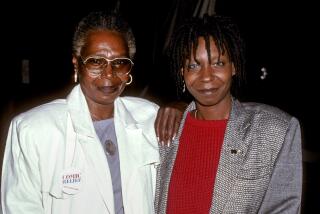World in malignment
ANYONE can do grandeur, but it takes a special literary skill to make squalor grand. Early in the 20th century, James Joyce exalted the beer-swilling, kidney-chomping denizens of Dublin into heroic figures. Early in the current century, Tasmanian author Richard Flanagan succeeded Joyce in both narrative style and substance with “Gould’s Book of Fish,” a delirious spectacle of pain and degradation in a subequatorial prison colony. Together with his “Death of a River Guide” and “The Sound of One Hand Clapping,” “Gould” cemented Flanagan’s reputation as the premier artist of brutalized flesh in our era.
Now, in “The Unknown Terrorist,” Flanagan has turned to contemporary versions of the oppressive colonial military and judicial systems he previously investigated. Like many other writers who were initially muted by the enormity of Sept. 11, 2001, he aspires to transmute the dangerous lunacy of today into art. A hard task, and he doesn’t fully succeed.
The book begins with Gina Davies, a.k.a. the Doll, a pole dancer at a seamy Sydney establishment. Gina has dreams of escape, until she meets the wrong man. She initially encounters Tariq at a local beach and then again at a Mardi Gras parade. Sparks fly. Sex is delirious. Tariq is gone in the morning, but as the Doll leaves the one-night love nest, the Australian equivalent of a SWAT team is moving in and just misses her departure. Apparently, Tariq is a suspected terrorist and, from this moment on, so is the Doll, because her entry to the building was recorded on “one, very bad, piece of video footage showing a blurry figure that could be any one of a million women in Sydney.”
Tempted to visit a police station to affirm her innocence, the Doll goes instead on her usual rounds, shopping and performing a private dance for Frank Moretti, a wealthy cripple who collects objects of beauty and atrocity. By the time a shriekingly omnipresent media brings her to her senses, it’s too late. She’s been recognized by Richard Cody, a TV journalist whose advances she once rebuffed at the strip club. Cody is determined to use her to revive his own flagging career.
A story of media and political mayhem that rings true requires a fidelity to our common experience, but “The Unknown Terrorist” simply defies credence. How can Cody be the only one in the country to identify the Doll -- especially since he was more interested in her buttocks than her face? How can the Doll happen to call Tariq at the precise moment she’s walking by a parked car and she hears his phone ringing in the trunk? The coincidences mount. Tariq is actually a drug runner for Moretti, whose ex-wife hosts a party attended by Cody. And then we have Greek cop Nick Loukakis. While working on the Moretti case and dating the Doll’s best friend, he too discovers the very car with the noisome cargo. Later he spots the Doll -- now the nation’s most-wanted person -- crossing the street.
The coincidences might have been palatable had there been any specificity to the protagonist, but the Doll is oddly generic from the start: “[H]er father came from somewhere, and her mother from somewhere else.” She’s a cipher, “her body ... neither skinny nor fat.” Even after we learn her real name, Flanagan refers to her by the nom-de-danse.
Thankfully, Flanagan can’t help but be brilliantly Flanaganian at moments. For example, when describing the dissolution of Loukakis’ marriage, he writes that the couple “watched each other slowly become strangers, watched their love die as you watch a great old gum tree succumb to dieback.” They were “like wild animals in a trap not of their making, they savaged each other, weakened and maimed the other, waiting, waiting, waiting.” But when he tries to humanize the Doll, we get too little, too late, too trite. Poor cliched Gina was molested by her father and had a stillborn child by a young soldier who died in a training exercise. The prose of her recollection is as sentimental as mother’s milk until the very end of a hospital scene when “She brushed her hands over [the dead child’s] eyes to close them and his eyelids fell off.” Here is the vitally vicious Flanagan who can stop a reader’s breath.
Unfortunately these grotesque grace notes are undermined by a hammeringly simplistic moral: We’re bad and we know this by the shabbiness of those who speak for us. When Cody pontificates that “it’s not as if we are Nazi Germany,” it’s hard to separate the creepy messenger from the straightforward message. Late in the book, when two police operatives discuss the Doll’s possible innocence, one declares: “It’s still important that the public know these bastards are out there. That this is going to happen here. And that they need people like us to stop it.” Again, the point is vulgar but true enough until “a strange and terrible thought” arises that compels us to consider a “darker, far more sinister explanation.” The hint of malign conspiracy aiming to hunt and kill the Doll for its own purposes is used to impugn legitimate ends by the adoption of illegitimate means.
Throughout the book, Flanagan sidesteps the fact of genuine evil at large in the world. Instead, he links the Doll’s story with the World Trade Center, Beslan, Bali, Madrid, the whole sorry litany of headlines, which culminates in her vision of “Osama bin Laden. George W. Bush. Missiles being launched. Men in robes firing grenade launchers.” In this reviewer’s naive eyes, President Bush has innumerable, intolerable flaws, but it’s insanity to conflate him and Bin Laden. As Flanagan admits in a curious prologue to “The Unknown Terrorist,” “ideas always miss the point.”
More to Read
Sign up for our Book Club newsletter
Get the latest news, events and more from the Los Angeles Times Book Club, and help us get L.A. reading and talking.
You may occasionally receive promotional content from the Los Angeles Times.






